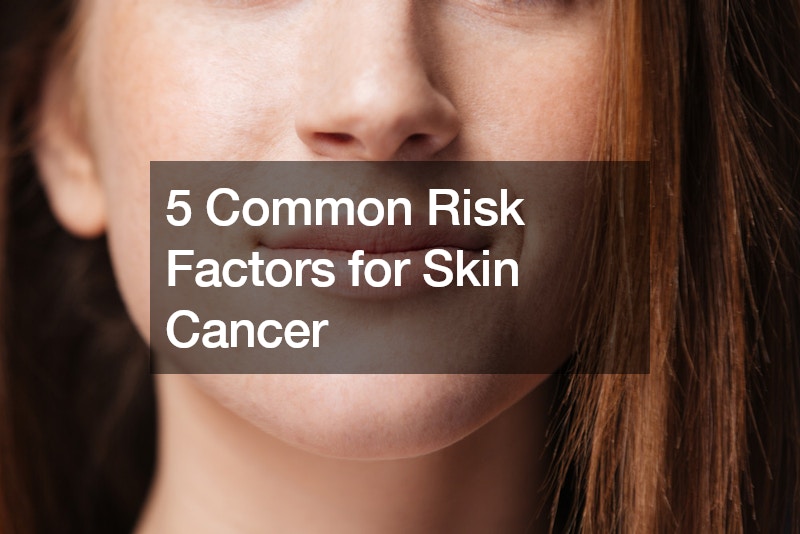

Skin cancer is a prevalent and potentially dangerous condition that affects millions of people worldwide. Here are five common risk factors that can increase the likelihood of developing skin cancer.
1. Excessive Sun Exposure
One of the most significant risk factors for skin cancer is excessive exposure to ultraviolet (UV) radiation from the sun. UV radiation can damage the DNA in skin cells, leading to mutations that can cause cancer. People who spend a lot of time outdoors, especially without adequate sun protection, are at a higher risk. To reduce this risk, it’s essential to use sunscreen with a high SPF, wear protective clothing, and seek shade during peak sun hours.
2. Tanning Beds
Tanning beds are another significant source of UV radiation and a common risk factor for skin cancer. Despite being marketed as a safe way to get a tan, tanning beds emit UVA and UVB rays, both of which can damage the skin and increase the risk of skin cancer. Studies have shown that using tanning beds, especially before the age of 35, can significantly raise the risk of melanoma, the deadliest form of skin cancer.
3. Fair Skin, Hair, and Eyes
Individuals with fair skin, light hair (blonde or red), and light-colored eyes (blue or green) are more susceptible to skin cancer. This is because they have less melanin, the pigment that provides some protection against UV radiation. Melanin absorbs and dissipates UV rays, helping to prevent DNA damage in skin cells. People with fair skin tend to burn more easily in the sun, increasing their risk of developing skin cancer. If you have these features, it’s crucial to be extra vigilant about sun protection and to get regular skin checks from a dermatologist in Deer Valley, AZ.

4. Family History of Skin Cancer
Genetics also play a role in the risk of developing skin cancer. If you have a family history of skin cancer, particularly melanoma, you may be at a higher risk. This increased risk can be due to inherited genetic mutations that make the skin more susceptible to cancer or shared family habits and lifestyles that involve significant sun exposure.
5. Multiple Moles or Atypical Moles
Having a large number of moles, especially atypical or dysplastic moles, can increase the risk of skin cancer. Atypical moles are usually larger than normal moles, have irregular shapes, and may have uneven colors. These moles are more likely to become cancerous, particularly melanoma. It’s essential to keep an eye on any changes in your moles, such as changes in size, shape, color, or texture. The ABCDE rule can help you identify suspicious moles that should be checked by a dermatologist in Deer Valley, AZ.


